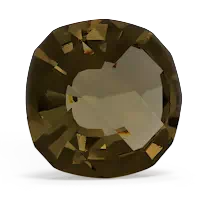
- 6 x 6 mm Cushion
- 0.80 carats
- AA Quality
- eye-clean
- Origin: Brazil
The beautiful and intricate curvy lines of this smoky quartz Celtic knot ring symbolize no beginning, no ending, and the continuity of everlasting love or the intertwining of two souls. Celtic jewelry has long been known to use many symbols of love, but no style of Celtic jewelry carries as much meaning as the Trinity Knot. Smoky Quartz is known as the gem of spirit and intellect and is the birthstone for the month of November.


I wanted to let you know how much I am enjoying my opal ring. In fact, I would like to order something a little bigger in a different gemstone. I'm so pleased with the craftmanship that I will sing your praises to my friends and family, as well as show them.
Diane G.
Lakewood, CO
Wednesday, August 9, 2017